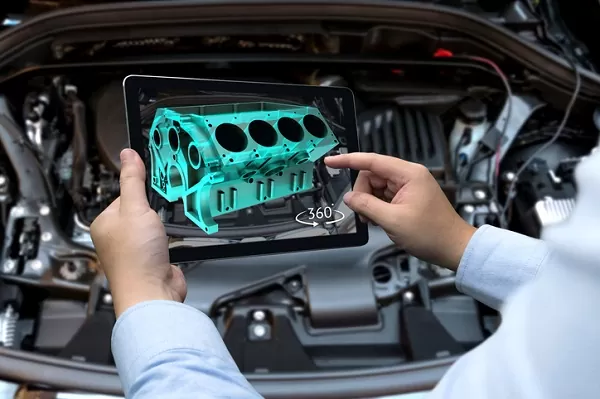It’s the middle of summer and the weather is hot and sticky. You get into your car, turn on the AC and wait for the cool air to start blowing. But it doesn’t. You crank up the AC to full blast, but it still doesn’t seem to make a dent in the heat. Chances are your AC system needs a recharge (also called re-gas). In this blog post, we will discuss how long an AC recharge takes, why it needs to be done, and what are the steps involved in doing it yourself or having a professional do it for you.
Let’s Take A Look!
How A Cars Air Conditioning System Works
As hot air from the engine enters the car, it passes through a compressor. The compressor squeezes the refrigerant gas and this raises its pressure and temperature. The hot, high-pressure gas then flows to the condenser.
The job of the condenser is to cool down and liquefy the refrigerant gas. This is done by blowing air across it from outside the car. As the refrigerant liquid leaves the condenser, it enters an expansion valve.
The expansion valve is a small nozzle that meters out the correct amount of refrigerant liquid into the evaporator. The evaporator looks like a small radiator and is located inside your car, usually near where the fresh-air intake for your heater/defroster system is located.
As the refrigerant liquid passes through the expansion valve, it expands and evaporates into a low-pressure gas. This cold, low-pressure gas then flows into the evaporator where it can start cooling the air inside your car. To complete the process, a fan blows air across the evaporator and into the car. As this happens, you should feel cool air coming from your vents!
The whole process starts again once the thermostat in your car detects that the cabin temperature has reached its desired setting.
What Does An AC Re-gas/Recharge mean?
When you hear the term AC Re-gas, it simply means that your car’s air conditioning system is being serviced. This involves topping up the refrigerant levels in your car.
The air conditioning system in a car works by circulating a refrigerant gas around a closed loop. This refrigerant absorbs heat from the air inside the car and then releases it outside.
Over time, the refrigerant gas can leak out of the closed loop and this is why an AC Re-gas is necessary. By topping up the refrigerant levels, you are effectively replenishing what has been lost so that your air conditioning system can continue to work efficiently.
How Do You Know If You Need an AC Recharge?
If your car’s AC system isn’t working properly, it might need a recharge. But how can you tell? Here are a few signs that indicate your car’s AC system needs some attention:
– strange noises coming from the AC unit
– reduced airflow from the vents
– warm air coming from the vents
– an unpleasant smell coming from the AC unit
If you notice any of these signs, it’s best to take your car to a mechanic and have them take a look. They’ll be able to diagnose the problem and recommend the best course of action.
What Are The Steps Involved In An AC Re-gas?
There are a few steps involved in an AC Re-gas and they are as follows:
– Firstly, the mechanic will check for any leaks in your car’s air conditioning system. If there are any leaks, these will need to be repaired before proceeding with the AC Re-gas.
– Once the leaks have been repaired, the mechanic will then evacuate all of the old refrigerant gas from your car’s air conditioning system.
– The next step is to recharge the system with new refrigerant gas. This is done by connecting your car to a machine that pumps the gas into your car’s air conditioning system.
– Finally, the mechanic will test your car’s air conditioning system to make sure that it is working properly.
How Long Does An AC Recharge Take?
The length of time it takes to recharge your AC system will depend on a few factors. The first is the type of car you have. Smaller cars will take less time to recharge than larger ones. The second factor is the size of the AC system. Again, smaller systems will take less time to recharge than larger ones. Finally, the condition of your AC system will play a role in how long it takes to recharge it. A well-maintained and newer AC system will take less time to recharge than an older and neglected one.
On average, most people can expect their AC recharge to take between 30 minutes and an hour. However, if you have a larger car or truck with a bigger AC system, it could take up to two hours.
How Much Does An AC Recharge Cost?
The average cost for an AC recharge at a mechanic is between $100 and $200. This includes the cost of the Freon, which is the gas that helps cool the air. The price will also depend on how much Freon your car needs and where you live. If you have a leak in your system, it will need to be repaired before it can be recharged.
Leaks are typically caused by worn hoses or seals and can range in price from $50 to $200 to repair
Can I Recharge My AC Myself?
There are a few things you need to take into account before you make the decision to do it yourself. First of all, you need to have the right tools for the job. Without these, you could end up doing more harm than good. Secondly, there are a few key steps you need to follow in order to do it properly. If you’re not confident in your ability to do this, then it’s probably best left to a professional.
So what exactly do you need in order to re-gas your car’s AC? Well, first of all you’ll need a can of refrigerant. You’ll also need a set of gauges in order to check the pressure. Finally, you’ll need a hose that’s compatible with the can of refrigerant.
It is also possible to buy “kits” that have all the parts you need – you can find some here
Once you have all of these things, you’re ready to get started. The first thing you need to do is locate the low-pressure port on your car’s AC system. This is usually located near the evaporator core. Once you’ve found it, attach the gauge to this port and make sure that it is reading correctly.
Next, take the can of refrigerant and attach it to the low-pressure port as well. Slowly open up the valve on the can, allowing the refrigerant to flow into the system. Once the can is empty, remove it from the low-pressure port and then reattach the gauge.
Now comes the tricky part. You need to check the pressure in order to make sure that you’ve added enough refrigerant. If it’s too low, then you’ll need to add more. On the other hand, if it’s too high then you’ll need to release some of the pressure by opening up the valve on the can again.
Once you’re happy with the pressure, you can close up everything and enjoy your newly re-gassed air conditioning! Just remember, if you’re not confident in your ability to do this properly then it’s always best to leave it to a professional
How Often Should You Recharge Your Air-con
How often you need to have your AC re-gased will depend on a few different factors. These include how often you use your AC, the type of car you drive, and the climate you live in. In general though, it’s recommended that you have your AC re-gassed every two years or so.
Of course, if you live in an area with extreme temperatures then you might need to do it more often. Likewise, if you don’t use your AC very often then you might be able to get away with doing it less frequently.
What Happens If I Don’t Re-gas My Air-con System?
If you don’t regas your air-con system, the most likely outcome is that it will gradually become less effective. This is because the refrigerant level will continue to drop over time, and eventually it will get so low that the AC system won’t be able to function properly. In extreme cases, this can even lead to damage to the compressor.
So there you have it, everything you need to know about re-gassing your car’s air conditioning system. Remember, if in doubt always consult a professional! Better safe than sorry.
Go Home










